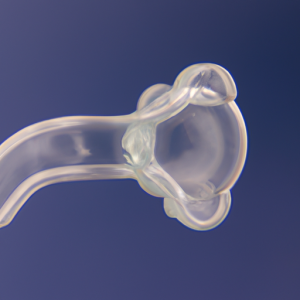Arthrosis, a degenerative joint disease, affects millions of individuals worldwide, causing pain, stiffness, and reduced mobility. This article aims to provide a comprehensive understanding of arthrosis, including its causes, symptoms, and diagnosis. Additionally, it will explore the various treatment strategies available, highlighting both conventional options and innovative approaches. Lastly, it will discuss the importance of lifestyle modifications and supportive therapies for individuals living with arthrosis. Whether you are seeking information for yourself or a loved one, this article will serve as a valuable resource in navigating the complexities of arthrosis and improving quality of life.
1. “Understanding Arthrosis: Causes, Symptoms, and Diagnosis”
Arthrosis, also known as osteoarthritis, is a degenerative joint disease that commonly affects older adults. It occurs when the protective cartilage that cushions the ends of bones wears down over time, leading to pain, stiffness, and reduced mobility in the affected joints. This section aims to provide an overview of the causes, symptoms, and diagnosis of arthrosis.
You can find out more about this theme here: https://bbgate.com/threads/thc-o-acetate-synthesis-from-thc.669/.
Causes:
Several factors can contribute to the development of arthrosis. The primary cause is age-related wear and tear on the joints. As we age, the cartilage naturally deteriorates, making the bones more vulnerable to damage. Other factors that can increase the risk of arthrosis include obesity, joint injury or overuse, genetic predisposition, and certain medical conditions such as rheumatoid arthritis or gout.
Symptoms:
The symptoms of arthrosis can vary depending on the affected joints, but common signs include joint pain, stiffness, and swelling. Initially, the pain may occur only during movement or after prolonged activity, but as the disease progresses, it can become persistent. Stiffness is most noticeable upon waking up or after periods of inactivity. In advanced stages, arthrosis can lead to joint deformities, reduced range of motion, and difficulty performing daily activities.
Diagnosis:
Diagnosing arthrosis typically involves a combination of medical history evaluation, physical examination, and imaging tests. The healthcare provider will inquire about the patient’s symptoms, medical history, and any family history of arthritis. During the physical examination, they may assess joint tenderness, swelling, and range of motion. X-rays are commonly used to visualize the joint space, cartilage loss, and bone spurs, which are characteristic of arthrosis. In some cases, the doctor may order additional imaging tests such as MRI or ultrasound to obtain a more detailed view of
2. “Effective Treatment Strategies for Arthrosis: Options and Innovations”
Arthrosis, also known as osteoarthritis, is a degenerative joint disease that affects millions of people worldwide. It is characterized by the breakdown of cartilage, the tissue that cushions the ends of bones within a joint, leading to pain, stiffness, and reduced mobility. While there is no cure for arthrosis, there are several effective treatment strategies available that can help manage the symptoms and improve the quality of life for those living with this condition.
One of the primary goals of arthrosis treatment is to alleviate pain and reduce inflammation. Nonsteroidal anti-inflammatory drugs (NSAIDs), such as ibuprofen and naproxen, are commonly prescribed to relieve pain and swelling associated with arthrosis. These medications work by blocking the enzymes that cause inflammation, providing temporary relief. However, it is important to note that long-term use of NSAIDs can have adverse effects on the stomach, kidneys, and liver, so they should be used with caution and under medical supervision.
Physical therapy is another crucial component of arthrosis treatment. It involves exercises and techniques designed to strengthen the muscles around the affected joint, improve joint stability, and enhance flexibility. Physical therapists can also provide guidance on proper body mechanics and suggest assistive devices, such as braces or splints, to support the joint and reduce pain during daily activities. Regular physical therapy sessions can help individuals with arthrosis regain range of motion, enhance their overall function, and manage pain effectively.
In recent years, there have been significant advancements in arthrosis treatment options and innovative approaches have emerged. One such innovation is the use of regenerative medicine techniques, such as platelet-rich plasma (PRP) therapy and stem cell therapy. PRP therapy involves injecting a concentrated solution of platelets derived from the patient’s own blood into the affected joint. These platelets contain growth
3. “Living with Arthrosis: Lifestyle Modifications and Supportive Therapies”
Living with Arthrosis: Lifestyle Modifications and Supportive Therapies
Arthrosis, also known as osteoarthritis, is a degenerative joint disease that affects millions of people worldwide. While there is no cure for arthrosis, there are various lifestyle modifications and supportive therapies that can help manage symptoms, improve quality of life, and slow down the progression of the disease.
One of the most important lifestyle modifications for individuals living with arthrosis is maintaining a healthy weight. Excess weight puts additional stress on the joints, especially the weight-bearing joints such as the knees and hips, exacerbating pain and stiffness. By adopting a balanced diet and engaging in regular exercise, individuals can not only shed excess pounds but also strengthen the muscles surrounding the joints, providing them with better support.
Physical activity plays a crucial role in managing arthrosis. While it may seem counterintuitive to exercise when joints are painful and stiff, regular physical activity can actually reduce pain and improve joint flexibility. Low-impact exercises such as swimming, cycling, and walking are particularly beneficial for individuals with arthrosis as they do not put excessive strain on the joints. It is important to consult with a healthcare professional or a physical therapist to determine the most appropriate exercise regimen based on individual needs and limitations.
In addition to exercise, pain management strategies are essential for individuals living with arthrosis. Non-steroidal anti-inflammatory drugs (NSAIDs) are commonly prescribed to relieve pain and reduce inflammation. However, long-term use of these medications may have adverse effects, so it is important to discuss their usage and potential risks with a healthcare professional. Other pain management techniques such as hot and cold therapy, acupuncture, and transcutaneous electrical nerve stimulation (TENS) can also provide relief and improve mobility.
Supportive therapies can complement lifestyle modifications and help individuals cope with the

